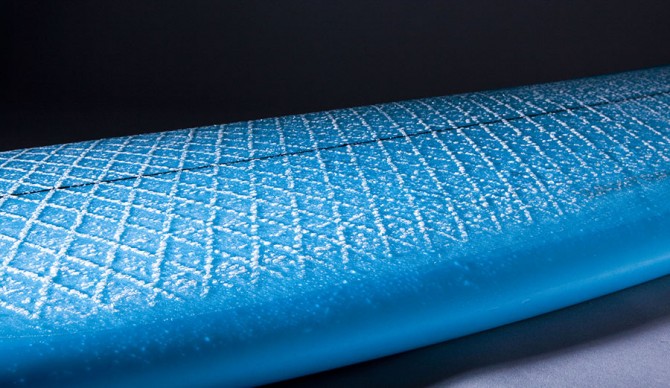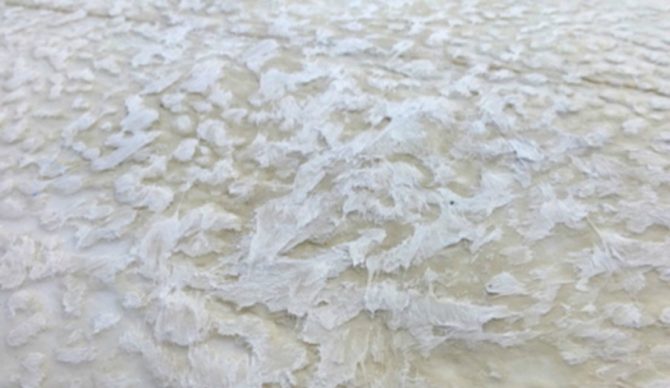
A well groomed, ready to go sticky stick.
You probably spend more time lying on top of your surf wax than you do your significant other. So shouldn’t you get to know it better? Yes, wax has been the board coating of choice since it was first used in 1935. But if you think it hasn’t changed in all that time, think again. There have been a couple of major, recent changes in how we make our sticks sticky. Just remember there’s such a thing as shark repellent surf wax now, proof that the wax game is getting as far out as the evolution of surfboards themselves. And since you ought to know anything that’s pressed against your nether regions for so many hours, we’re stepping in. We’ve assembled everything you need to know about the stuff coating the inside of your boardbag, car upholstery and chest hair. There’s a surprising number of options for you to spend that dollar bill (literally) on. It’s time somebody answered a few sticky questions…important questions like, is it organic? Or vegan?
The Mainstays
It’s not likely vegan. Most wax recipes contain beeswax. Unless you know the ingredients, which generally aren’t listed on surf wax packaging, you can’t be sure. Recipes are regarded as trade secrets held close to the vest by manufacturers, making ingredient lists hard to obtain. But for the record, some newer companies now offer beeswax-free wax (Keep reading for more about that).
For generations, the main ingredient has been paraffin, a byproduct of refining petroleum. Paraffin was one of the things that led old Johnny Utah and Angelo Pappas to the Ex-Presidents, and that’s what you’ll find in familiar brands like Mr Zog’s, Sticky Bumps and Bubble Gum. But beeswax, petroleum jelly, vegetable oils, pine resin and other things are added to achieve varying consistencies, like tackiness, the softness found in cool water wax or the hardness found in warm water wax.
Is it biodegradable? You may not love the idea of your surf wax being sucked from the belly of our planet, but it is in fact biodegradable and compostable.
The Sticky Icky
Though super gooey wax formulas may have existed in the past, they’re enjoying a renaissance. Aerial surfers have rediscovered the foot-philic properties of super sticky varieties, which, in addition to their natural tackiness are known to retain those properties through a huge temperature range. The Brazilian brand Fu Wax, reportedly found by the case at World Tour comp sites, rekindled the desire for upholstery-ruining, fingertip-smearing, air-rotator-greasing wax. But similar formulas are available from Sticky Bumps as Punt Wax and Munkey Wax, from Mr. Zog’s as Dream Cream, and Bubble Gum as Gu Wax. They may be used sparingly for extra tack over a normal base coat or top coat.

The sticky-icky Brazilian brand, Fu Wax, looking rather tacky. Photo: Fu Wax
The So-Called Organic
Don’t like the idea of consuming fossil fuel-based wax? Breathe easy, my earth-loving, Tesla-driving friend. You have options. There are numerous so-called organic surf waxes on the market, all thanks to several small companies nudging their way in and larger companies offering alternatives. These waxes often replace paraffin with oil from coconuts or soybeans and use beeswax and tree resin to achieve desired characteristics.
But is it really organic? The term isn’t as straightforward as it seems. As understood by chemists, any carbon-based substance, including paraffin, AKA conventional wax, is organic. Also, the hydrogenation process used to make soy wax renders it a non-organic substance.
As Mr. Zog’s says on its website, “Some companies claim their soy-based surf waxes are organic, but there is no regulatory agency that enforces, or even defines, what constitutes an organic surf wax. Companies that claim hydrogenated soybean oil is organic are able avoid false-advertising charges because, in chemistry, any chemical made up of carbon atoms is referred to as ‘organic.’”
Santa Cruz-based Matunas makes wax using only ingredients produced on a family farm from a secret recipe. Apparently they are using jasmine root, apricot tree sap and clay. If indeed no beeswax is used, Matunas would be a rare vegan, fossil-fuel free surf wax.
Pygmy Riding Company and Surf Organic make organic waxes, as do Sticky Bumps and Bubble Gum, to name a few.
The DIY
For homesteading, hatchet weilding, anti-capitalist types, there’s DIY. Surf wax is darn easy to make, providing you can get some tree sap (hence the hatchet). Toss it in an aluminum can with coconut oil and tree sap, place the can in a pot of boiling water, and blam — you’ve got a batch. Like the first commercial surf wax producers, you can use tuna cans as molds. When it hardens, you’re ready to wax your homemade longboard made of locally-sourced reclaimed wood.

